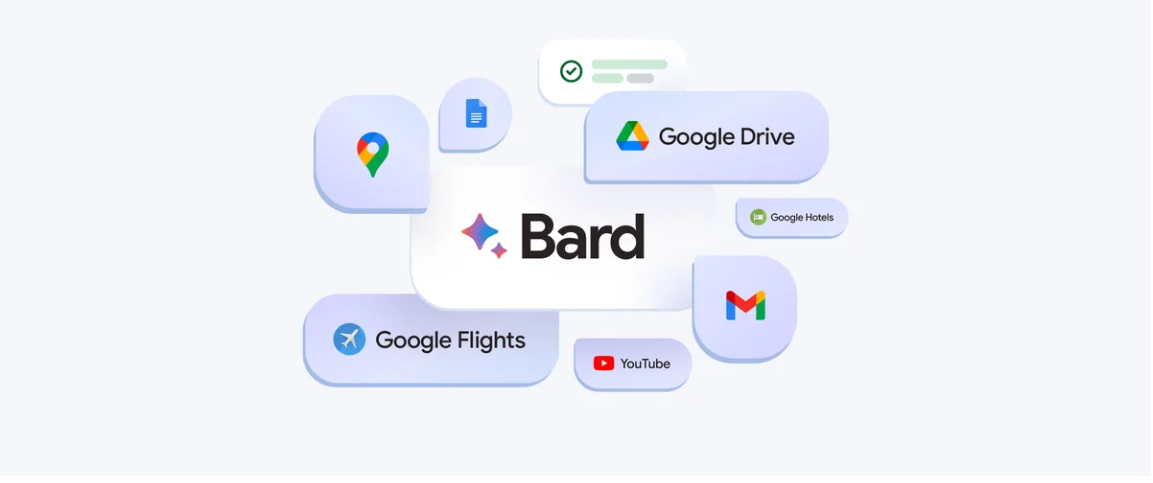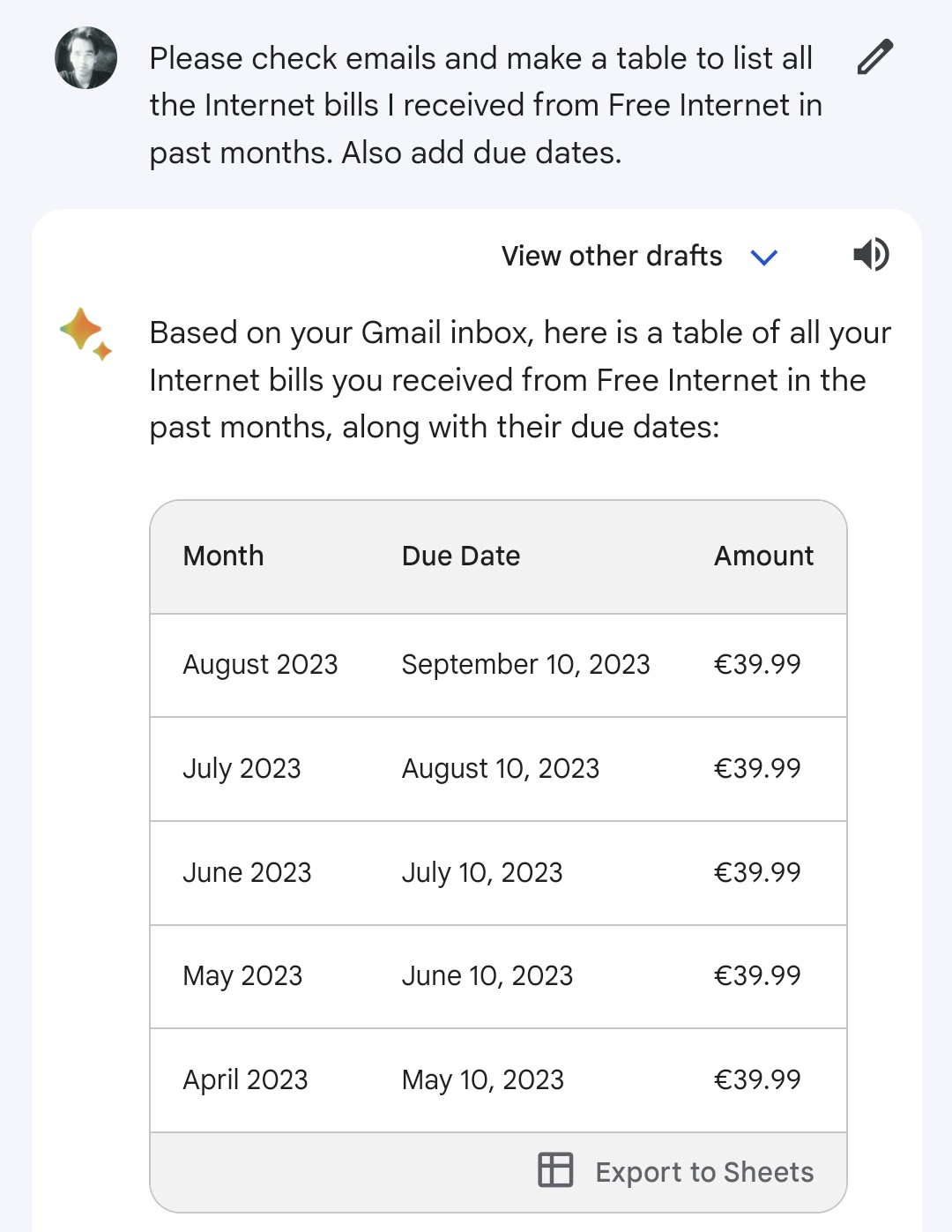Bard's Big Update: Google Integrates AI with Google Apps
 raju ghorai
raju ghorai
Today, we dive into a significant development in the world of artificial intelligence, as Bard, Google's AI language model, takes a big step forward by integrating seamlessly with your favourite Google Apps. This move is a clear indication of Google's commitment to staying at the forefront of AI innovation and its determination to compete with OpenAI.
The Power of Bard Extensions
On September 15th, Google CEO Sundar Pichai made an exciting announcement via Twitter. He revealed that Google was introducing extensions to Bard, enhancing its capabilities by allowing it to connect with various Google Apps, including Gmail, Drive, and Docs, fostering even deeper collaboration. This marks a substantial leap forward in AI's integration into our everyday digital lives.
With Bard extensions, this AI powerhouse can now access and present relevant information from the Google tools you frequently use, such as Gmail, Docs, Drive, Google Maps, YouTube, and Google Flights and Hotels. Even when the information you seek is scattered across multiple apps and services, Bard can seamlessly bring it all together. For instance, Bard can assist you in streamlining the job application process by locating your resume, summarizing it, and crafting a personal statement.
This integration signifies a significant trend not just in the consumer AI space but also in enterprise AI. The ability to personalize responses and access private data is becoming increasingly vital. Companies that users already trust with their data are well-positioned to thrive, as customers prefer to work with familiar service providers. In this regard, Google's integration with Bard is a game-changer, as it seamlessly merges with the Google Suite of tools that many businesses and individuals rely on daily.
Veracity and Confidence in Responses
To ensure that the information provided by Bard is accurate, Google has introduced a feature that evaluates Bard's responses against web content for substantiation. When you click the "G" icon, Bard will assess the response and determine whether there is corroborating or opposing information available online. Users can click on highlighted phrases to learn more about the supporting or contradicting information found during a search.
This transparency and accountability in AI responses are groundbreaking. Jack Krawchick, a Bard team member, highlighted these features, emphasizing that Bard now actively communicates its confidence level in responses. The updated "Google it" button allows users to identify confident claims (in green) and claims with lower certainty (in orange), even acknowledging when a mistake is made.
Multimodality: A New Frontier
Another noteworthy aspect of this update is the expansion of multimodality, which allows images and prompts to be integrated into responses in over 40 languages. This subtle yet crucial expansion enhances the user experience and highlights Google's commitment to making Bard more versatile and accessible worldwide.
OpenAI's Race to Stay Competitive
In the race for AI supremacy, OpenAI is not sitting idly by. According to recent reports, OpenAI is striving to launch its next-generation multimodal model faster than Google's Gemini. While Google is testing Gemini with select outside companies, OpenAI is preparing to roll out GPT Vision more broadly. GPT Vision offers multimodal features that were initially unveiled during the launch of GPT-4 in March. OpenAI's ability to keep pace with Google's developments will be closely watched in the AI community.
Future Prospects and Challenges
As we move into an intriguing phase of LLM (Large Language Model) development, several factors come into play. Business-wise, we anticipate meaningful cost reductions for GPT-4 and improved user interfaces for fine-tuning. The advent of multimodal GPT-4 is eagerly awaited, and this could reshape the landscape of AI adoption.
From a policy perspective, models beyond GPT-4 may face regulatory challenges, potentially leading to licensing requirements. These developments will likely have a significant impact on AI's future trajectory.
The Future Beckons
In conclusion, the world of AI is evolving rapidly, with Google and OpenAI competing fiercely to innovate and offer advanced AI models. While the battle for AI dominance unfolds, users can already benefit from Bard's integration with Google Apps, enhancing their daily workflow and productivity.
The road ahead promises exciting developments, and as AI enthusiasts eagerly await OpenAI's developer conference on November 6th, it's safe to say that the AI landscape is on the brink of profound changes. Stay tuned for more updates and insights from the AI Breakdown.
Thank you for joining us today, and until next time, peace!
Subscribe to my newsletter
Read articles from raju ghorai directly inside your inbox. Subscribe to the newsletter, and don't miss out.
Written by

raju ghorai
raju ghorai
FullStack Developer BE
